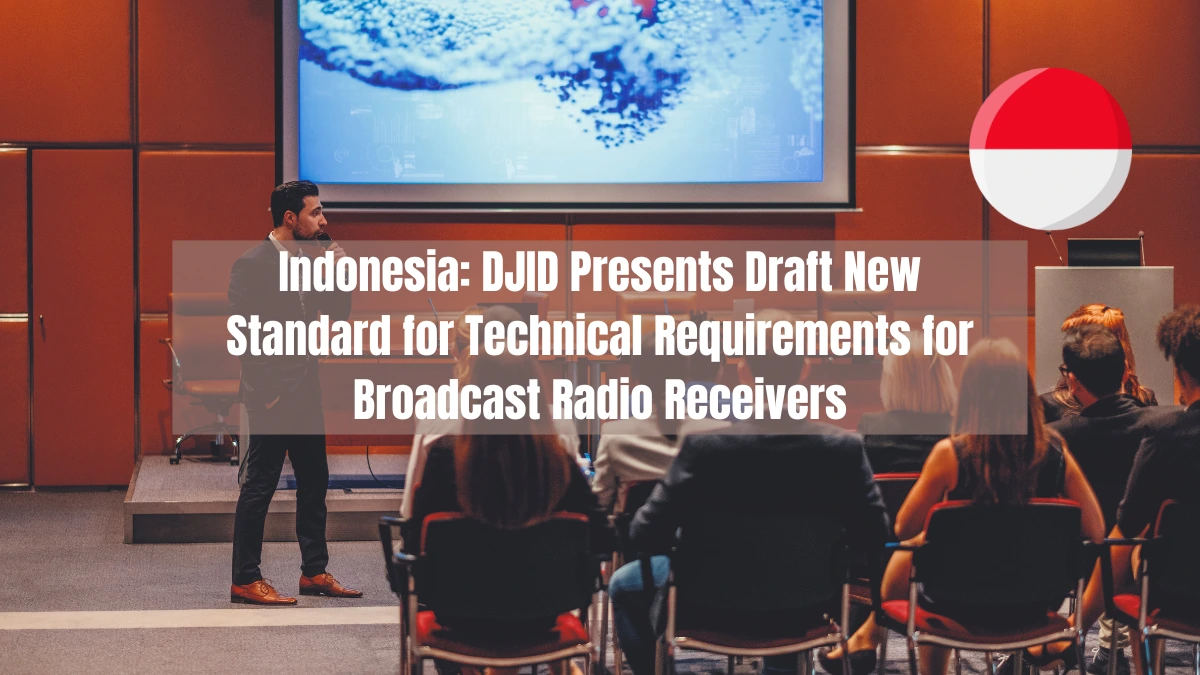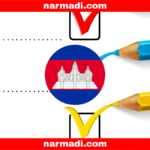Monday, July 28, 2025, the Ministry of Digital Communications (KOMDIGI) and the Directorate General of Digital Infrastructure (DJID) presented a Draft Ministerial Decree (RKM) on new standards for Technical Requirements for Broadcast Radio Receivers.
To ensure that broadcast radio receivers circulating in Indonesia are safe, compatible, ready to support digital broadcasting, and have disaster features as referenced in the new draft standard for Technical Requirements for Broadcast Radio Receivers, DJID invited stakeholders to present the DKM.
The new standard for Technical Requirements for Broadcast Radio Receivers focuses on the technical aspects that must be met by two categories of devices, namely passenger vehicle head units and portable receivers for households.
Also Read
This article will provide a summary of the RKM presentation on the new standard for Technical Requirements for Broadcast Radio Receivers in meeting DJID’s future certification requirements.
Table of Contents
New Standard for Technical Requirements for Broadcast Radio Receivers

The draft Ministerial Decree (RKM) on the new standard for Technical Requirements for Broadcast Radio Receivers covers all aspects, such as power supply, electrical safety requirements, electromagnetic compatibility (EMC) requirements, radio frequency requirements, disaster early warning feature (EWF or EWS) requirements, and functionality requirements. The following are the details:
Power supply
The device shall support an AC or DC power source, according to the type of use. The working voltage must be within the SELV (Safety Extra Low Voltage) limit, maximum 42.4 V peak or 60 V DC.
Electrical safety
Electrical safety assessment parameters Broadcast Radio Receiver:
- Overvoltage or electrical strength or dielectric strength; and
- Leakage current or touch current
Technical reference standard test method:
- SNI IEC 60950-1
- SNI IEC 62368-1
- SNI 04-6253
- IEC 60065
Electromagnetic compatibility (EMC) requirements

Electromagnetic compatibility (EMC) requirements must meet three aspects: classification, immunity, and emission requirements. Here are the details:
- Classification requirements: Vehicular, fixed, or portable equipment.
- Immunity requirements: Following the provisions in the Sixth Dictum of the Ministerial Decree
- Emission requirements: SNI CISPR 32:2015 or IEC CISPR 32
Radio frequency requirements
Radio frequency requirements must fulfill three aspects, namely receiver working frequency, sensitivity, and Adjacent Channel Selectivity (ACS). Details of each requirement follow:
Receiver working frequency
| Frequency Bands | Technology Standards | Broadcast Radio Receivers Installed as Head Units in Passenger Cars | Portable Household Use Broadcast Radio Receivers |
| 526.5 – 1606.5 kHz | AM | ✓ | ✓ |
| 526.5 – 1606.5 kHz | DRM | ✓ | |
| 2300 – 26100 kHz | AM | ✓ | ✓ |
| 2300 – 26100 kHz | DRM | ✓ | ✓ |
| 87.5 – 108 MHz | FM | ✓ | ✓ |
| 87.0 – 108 MHz | DRM | ✓ | ✓ |
| 174 – 230 MHz | DRM | ✓ | ✓ |
| 174 – 230 MHz | DAB | ✓ | ✓ |
Sensitivity
| Frequency Bands | Technology Standards | Audio Quality Criteria | Required Signal | |
| Center Frequency (MHz) | Conduction Power Required Sensitivity (dBm) | |||
| 526.5 – 1606.5 kHz | AM | SNR ≥ 22 dBQ ref 40% AM | 999 | -65 |
| 2300 – 26100 kHz | AM | SNR ≥ 22 dBQ ref 40% AM | 9.650 | -65 |
| 525.5 – 1606.5 kHz | DRM | 10 seconds of audio without impairments | 999 | -99 |
| 2300 – 26100 kHz | DRM | 10 seconds of audio without impairments | 4 dan 19 | -99 |
| 87.5 – 108 MHz | FM | SNR ≥ 22 dBQ ref 40% AM, and 10 seconds of audio with no subjective impairments | 98 | -90 |
| 87.0 – 108 MHz | DRM | 10 seconds of audio without impairments | 100 | -100 |
| 174 – 230 MHz | DRM | 10 seconds of audio without impairments | 200 | -100 |
| 174 – 230 MHz | DAB | 10 seconds of audio without impairments | 202,928 | -94 |
Adjacent Channel Selectivity (ACS)
| Frequency Bands | Technology Standards | Audio Quality Criteria | Required Signal | Channel Spacing (N) | |
| Mid Frequency (MHz) | Conduction Power (dBm) | ||||
| 526.5 – 1606.5 kHz | AM | SNR ≥ 22 dBQ ref 40% AM | 999 | -59 | ±N x 9 kHz |
| 2300 – 26100 kHz | AM | SNR ≥ 22 dBQ ref 40% AM | 9.650 | -59 | ±N x 10 kHz |
| 526.5 – 1606.5 kHz | DRM | 10 seconds of audio without impairments | 999 | -91 | ±N x 9 kHz |
| 2300 – 26100 kHz | DRM | 10 seconds of audio without impairments | 4 dan 19 | -91 | ±N x 10 kHz |
| 87.5 – 108 MHz | FM | SNR ≥ 40 dBQ ref ±60,8 kHz deviation, and that there shall be 10 seconds of audio with no subjective impairments | 98 | -84 | ±N 100 kHz |
| 87.0 – 108 MHz | DRM | 10 seconds of audio without impairments | 100 | -92 | ±N 100 kHz |
| 174 – 230 MHz | DRM | 10 seconds of audio without impairments | 200 | -92 | ±N 100 kHz |
| 174 – 230 MHz | DAB | 10 seconds of audio without impairments | 202,928 | -70 | ±N 1712 kHz |
Disaster early warning feature (EWF/EWS) requirements

The device shall support Emergency Warning Functionality (EWF) for DRM or Emergency Warning System (EWS) for DAB, provided that:
- Automatic switch to emergency broadcast when alarm is active
- Increase volume and display a visual indicator
- Return to normal broadcast after user interaction
Alarm signal check duration:
- Maximum 20 seconds for vehicle head unit devices
- Maximum 30 seconds for household portable devices
Functionality requirements
The functionality requirements of broadcast radio receiver cover several aspects, namely user interface, tuning, service selection, decoding & demodulation, audio, service information, and data application. The following are required by the device:
- Support for DRM and DAB modulation as per ETSI standards
- Audio decoding capabilities xHE-AAC, HE-AACv2, mono/stereo, and MPEG Surround
- Full text display (Journaline, EBU Latin)
- AFS (Automatic Frequency Switching) feature
- Signal quality indicator (for portable devices)
Testing Methods
Each technical parameter will be tested using the following standards:
| Test Parameters | Testing Methods |
| Electrical Safety | SNI IEC 60950-1:2016 or the latestSNI IEC 62368-1:2014 or the latestSNI 04-6253IEC 62368-1IEC 60950-1IEC 60065 |
| EMC Emissions and Immunity | IEC CISPR 32 and SNI CISPR 32:2015, while for EMC Immunity specified in Dictum Kenam of this Ministerial Decree |
| Radio Frequency | ETSI EN 303 345 |
| Early Warning Features and Functionality | As per declaration |
Through this Draft Ministerial Decree on Technical Requirements for Broadcast Radio Receivers, the Indonesian government hopes that the industry can be better prepared to provide devices that are reliable, safe, and in accordance with the development of global digital broadcast technology.
This new standard will serve as a reference for DJID certification in the future. Therefore, knowing the updates of this draft decision is necessary so that when it is enacted, broadcast radio receiver devices circulating in Indonesia are following the latest regulations.
To find out updates on the development of Information and Communication Technology (ICT) product regulations, you can contact Dimulti as a SEA product compliance and certification service to assist you regarding existing regulations to manage your Type Approval certification.









